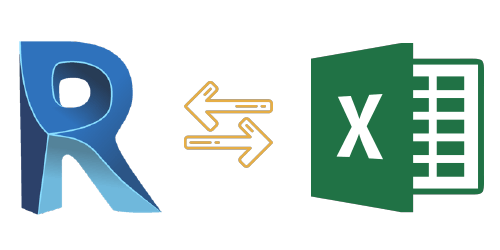Revit Tool Collection: Increase Your Design Abilities
Wiki Article
Revit Accelerator: Excel Assimilation Approaches for Boosting Efficiency and Partnership
In this write-up, we will discover the benefits of integrating Excel into your Revit operations. And also, we will share ideal methods for flawlessly integrating Excel right into your Revit tasks. Obtain all set to supercharge your Revit experience with our Revit Accelerator: Excel Combination Strategies!Benefits of Excel Combination in Revit
The benefits of Excel assimilation in Revit are various and can substantially enhance efficiency and partnership. By perfectly linking these two effective devices, you can enhance your process and save beneficial time. With Excel assimilation, you can easily import and export information in between Revit and Excel, allowing you to leverage the staminas of both programs.
One more advantage of Excel combination is the capacity to create vibrant schedules and records. By connecting your Revit model to an Excel spreadsheet, any changes made in Revit will automatically upgrade in the corresponding Excel documents. This makes it very easy to produce current timetables, quantity takeoffs, and various other job documentation.
Excel combination in Revit also makes it possible for far better partnership among employee. With the ability to import and export information, you can conveniently share details with coworkers who might not have accessibility to Revit. This advertises effective interaction and permits for far better control and decision-making.
Improving Workflows With Revit and Excel
Enhancing operations with Revit and Excel can greatly boost efficiency and collaboration. By incorporating the capacities of Revit and Excel, you can perfectly transfer data in between the two applications, getting rid of the requirement for hands-on information access and reducing the danger of mistakes.
Using Revit and Excel with each other enables you to leverage the toughness of each program - revit plugins. You can export information from Revit into Excel, where you can perform complex estimations, create charts and charts, and assess the info in a much more effective and organized fashion. On the various other hand, you can import information from Excel right into Revit, enabling you to swiftly update your designs and documents based on adjustments made in Excel
The integration of Revit and Excel likewise promotes cooperation amongst team members. By sharing Excel files, you can conveniently connect and collaborate on design and construction-related data. This boosts sychronisation and makes certain that every person is collaborating with the most updated details.
Taking Full Advantage Of Cooperation With Excel and Revit
To make the most of partnership with Excel and Revit, you can perfectly upgrade and share layout and construction-related information with your group. With simply a couple of clicks, you can import Excel spreadsheets into your Revit design, allowing you to quickly accessibility and adjust the data.Among the vital benefits of utilizing Excel in conjunction with Revit is the capability to update data in both programs all at once. Any kind of changes made in Excel will automatically be reflected in Revit, and the other way around. This guarantees that every person is dealing with one of the most up-to-date information, staying clear of complication and conserving beneficial time.
In addition, Excel gives powerful tools for analyzing and arranging data, which can considerably improve your collaboration efforts. You can create custom reports and charts in Excel, assisting you to imagine and interact essential task details effectively. When providing data to stakeholders or making informed choices based on task metrics (revit plugins)., this can be specifically beneficial.
Advanced Methods for Increasing Efficiency in Revit Using Excel
By utilizing advanced strategies in Revit, you can substantially boost your efficiency by leveraging the power of Excel. Among the vital approaches for boosting productivity is by making use of Excel as an information administration device. With Revit's Excel assimilation function, you can connect Excel spread sheets straight to your Revit version, allowing you to conveniently handle and update information. This assimilation enables you to create timetables, compute quantities, and carry out data analysis efficiently.
Additionally, you can utilize Excel macros to automate repetitive tasks in Revit (revit plugins). Macros permit you to videotape a collection of actions and play them back with a single click, conserving you effort and time. For instance, you can produce a macro to immediately generate area routines or update parameter values in mass.
Finest Practices for Excel Assimilation in Revit
Utilizing Excel as an information monitoring tool revit plugins in Revit enables for efficient management and upgrading of data. One of the finest practices for Excel combination in Revit is to develop a clear and organized data structure. By adhering to these finest methods, you can successfully make use of Excel as an information monitoring device in Revit and boost your performance and partnership.Final Thought
To conclude, integrating Excel with Revit can significantly improve performance and collaboration in the style procedure. By enhancing operations and taking full advantage of partnership, teams can work a lot more efficiently and successfully. Advanced techniques, such as using Excel formulas and macros, can further improve productivity in Revit. Nevertheless, it is necessary to follow finest techniques to ensure seamless assimilation and avoid any type of prospective concerns. By leveraging the power of Excel, Revit customers can attain greater levels of efficiency and partnership in their projects.With Excel combination, you can conveniently import and export data between Revit and Excel, enabling you to take advantage of the strengths of both programs.
One of the vital benefits of Excel integration is the capacity to make use of Excel formulas and functions within Revit. By linking your Revit version to an Excel spread sheet, any kind of modifications made in Revit will immediately upgrade in the equivalent Excel data. On the various other hand, you can import data from Excel right into Revit, allowing you to swiftly upgrade your versions and documentation based on changes made in Excel.
With Revit's Excel assimilation feature, you can connect Excel spreadsheets directly to your Revit model, permitting you to quickly manage and upgrade information.
Report this wiki page